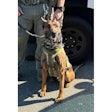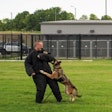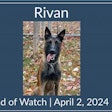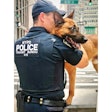For as long as most active SWAT operators have been police officers, there has been one gospel truth about SWAT sniper operations: the 70-Yard Rule. Ask any SWAT sniper what is the average range of a police sniper shooting, and he will answer, “About 70 yards.” Ask him the source of his data, and he will say, “FBI statistics.”
When the American Sniper Association was founded in 2000, its president and veteran police sniper Derrick Bartlett went looking for the FBI data. What he found was that the FBI had no such information to offer and that it had never kept, nor had it ever compiled, any statistics regarding the use of precision rifle shooters in police operations.
Bartlett was stunned when he learned that one of the tent pegs of SWAT sniper doctrine was actually a stat that somebody made up. So he and the other principles of the American Sniper Association (ASA) decided to conduct a comprehensive survey and uncover the truth about SWAT sniper operations.
In the survey, which was conducted from January 2002 until December 2004, more than 897 law enforcement agencies that field tactical teams were contacted by ASA personnel. The data yielded information on 219 sniper engagements over a period of 20 years.
Distance to Target
The ASA study, which is titled “Police Sniper Utilization Report 2005,” revealed that contrary to the old 70-yard myth, the average range at which police snipers engage suspects is actually 51 yards.
While at first the 19-yard discrepancy doesn’t seem significant, it should be noted that this is almost a 30-percent difference.
Does this mean that police sniper training should be modified to match this new reality? Perhaps. One thing that the survey clearly reveals is that police snipers often engage at much closer distances than SWAT trainers believe.
For example, the ASA report documents one sniper engagement at a distance of five yards. At first glance, this may seem like an “easy” task for a sniper trained to shoot at targets at much greater range. However, while distance to the target was not a great concern with this shot, the conditions presented many challenges for the sniper.
The ASA report says, “This shot was taken indoors in a hostage situation. The sniper was forced to use a teammate as a standing support to make a shot on a very elusive and fleeing target.” If that wasn’t difficult enough, the shot had to be taken very quickly in low light.
There is much dispute as to the longest range at which a police sniper has engaged a suspect. The ASA study documents a hostage incident in which a sniper from the Pennsylvania State Police fired on a suspect from 187 yards.
There is also anecdotal evidence of police snipers shooting at suspects from as much as 400 yards. However, most of these cannot be confirmed or they are so exceptional in nature that they can only loosely be defined as SWAT sniper engagements.
Ammunition and Equipment
It’s no surprise that the ASA study revealed that the precision rifle used most often by police snipers is the Remington 700. This relatively inexpensive rifle can be easily customized by police armorers and accessorized by snipers, and it has a well-earned reputation for accuracy and ease of use.
The most common caliber for police sniper rifles is .308. In this caliber, police snipers contacted by ASA seem to have an overwhelming preference for the 168-grain Match King bullet, known as the “boattail hollowpoint” to many shooters. “This round has been the preferred ammunition for snipers for years,” the ASA study reports.
However, the ASA report also notes a major problem with the 168-grain Match King: overpenetration. Nearly 90 percent of the snipers who had used the ammo in an engagement told ASA that it had passed through the target. “At some point, this is going to cause an inadvertent injury or death to a hostage or team member,” ASA says.
Some ammunition makers, including Hornady and Black Hills, are now offering alternative sniper rounds that use ballistic tips for less penetration and offer similar or better ballistic performance than the 168-grain Match King. “Both have been field-tested and will shoot as accurately as any of the current match grade configurations using the Match King bullet,” ASA reports. “Hopefully by documenting this problem, we can steer teams away from the Match King and encourage other manufacturers to work on better designs to meet our needs.”
Life and Death
One finding in the ASA study that should be made available to the public at large is evidence that SWAT teams and even SWAT snipers are not overly violent.
The overwhelming majority of SWAT callouts do not result in shots fired by the SWAT team. ASA estimates that there are 10,000 callouts per year. Nationwide for the 20 years included in the study that adds up to about 200,000 deployments. ASA calculates that out of those 200,000 callouts only 172 incidents have ended with a SWAT sniper killing a suspect.
The survey also shows that police snipers don’t always kill suspects that they fire upon, nor do they always intend to. ASA documents 219 SWAT sniper shootings. Of these, it’s known that 104 struck the suspect in the head or neck, 104 in the body, seven in the arm or hand, and two in a leg. The suspect died of his or her wounds in only 172 of these incidents.
ASA notes that even some of the suspects who were shot in the head and neck survived their wounds. However, none of these suspects were shot in the brain or spinal cord. Instead, they were hit in the jaw or mouth.
Training Implications
ASA’s survey reveals that many police sniper training programs and training exercises should be modified to prepare officers for the reality of sniper operations.
Training that focuses on the theoretical average distance of 70 yards needs to be changed to incorporate both closer and more distant targets. Training should also include shots at point-blank range and at distances of more than 100 yards. It’s also imperative that snipers receive more training shooting at moving targets.
More important than the distance of the targets shot in training is the environment of the training. The ASA survey shows that more than 95 percent of SWAT sniper engagements occur in lowlight conditions after nightfall. Snipers should train in these conditions. Also, each agency should make every effort to equip its snipers with night vision optics.
Finally, police snipers should practice shooting in a variety of positions. The ASA survey documents that SWAT snipers have been required to take shots in positions ranging from the ultra-stable prone with a bipod position to squatting with no support. Agencies that field snipers must train them to take shots while prone, standing offhand, standing supported, kneeling, and squatting.
The American Sniper Association’s “Police Sniper Utilization Report 2005” contains a wealth of information that could be useful to the SWAT commander or SWAT trainer. In addition to the highlights noted above, the report includes discussions of optics, shooting through intermediate barriers, geographical statistics, and detailed incident reviews. It is available for $17 from the American Sniper Association at www.americansniper.org.
The survey is an ongoing project of the Association. Agencies that want to participate can download the survey form on the Association’s Website.


















